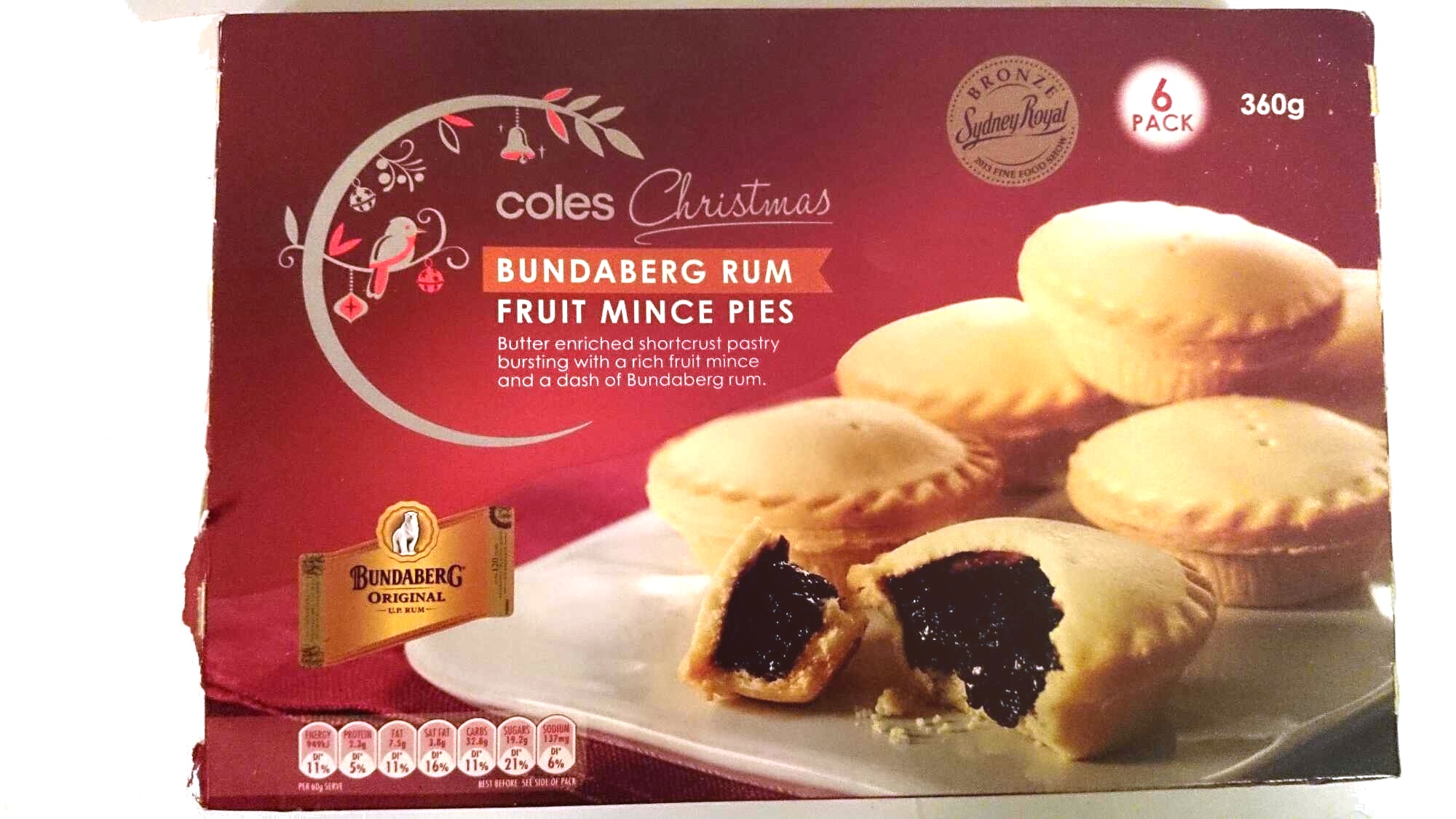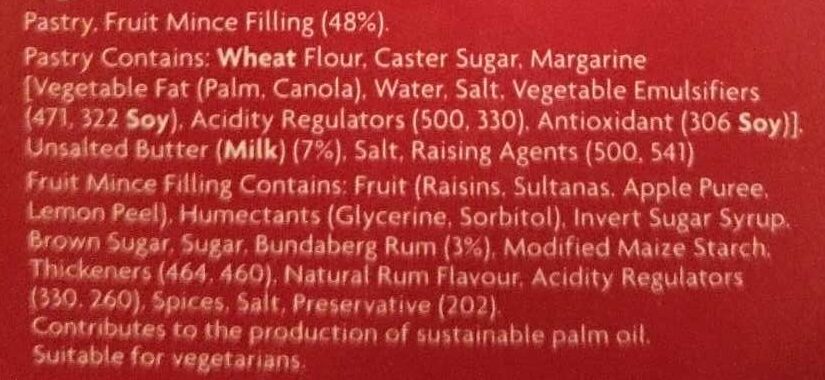Coles Bundaberg Rum Fruit Mince Pies - 360g
This product page is not complete. You can help to complete it by editing it and adding more data from the photos we have, or by taking more photos using the app for Android or iPhone/iPad. Thank you!
×
Barcode: 9300601428427 (EAN / EAN-13)
Quantity: 360g
Packaging: Box
Brands: Coles
Categories: Pies, Fruit Mince Pies
Labels, certifications, awards: Vegetarian, Bronze Sydney Royal Easter Show
Origin of ingredients: New Zealand, Imported Unknown
Manufacturing or processing places: New Zealand
Stores: Coles
Countries where sold: Australia
Matching with your preferences
Environment
Packaging
Transportation
Threatened species
Report a problem
Data sources
Product added on by foodorigins
Last edit of product page on by annelotte.
Product page also edited by packbot, roboto-app, tbound2.
If the data is incomplete or incorrect, you can complete or correct it by editing this page.








